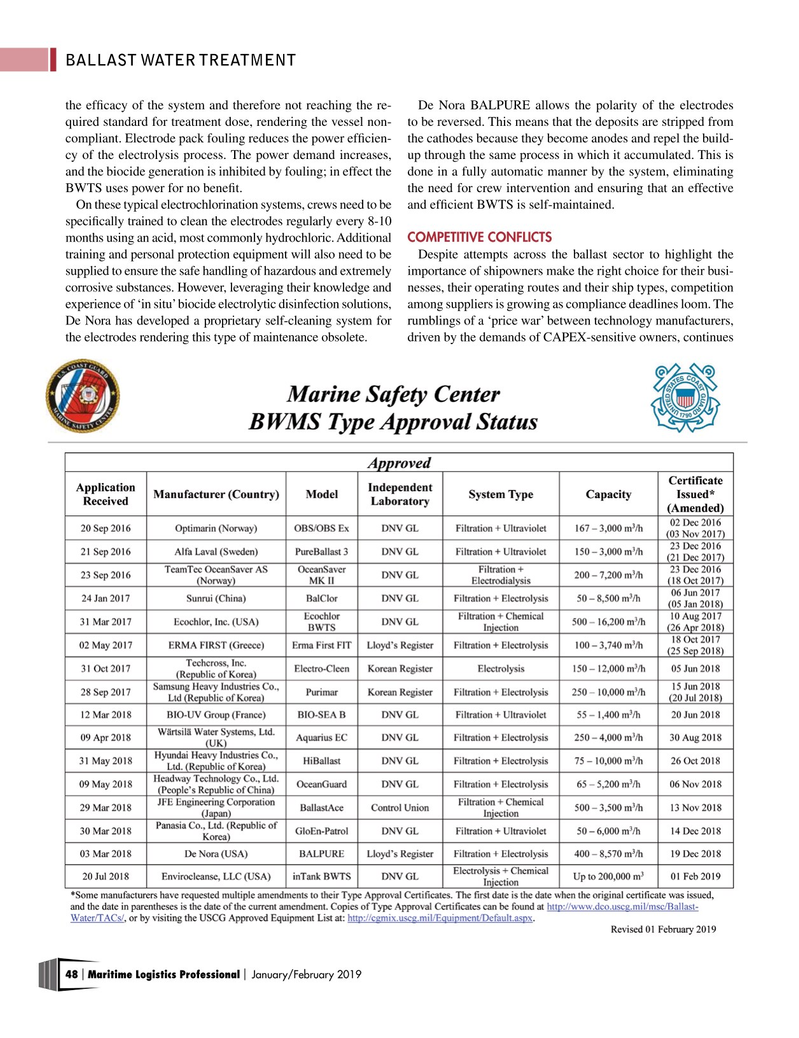
Page 48: of Maritime Logistics Professional Magazine (Jan/Feb 2019)
Cruise Ports Annual
Read this page in Pdf, Flash or Html5 edition of Jan/Feb 2019 Maritime Logistics Professional Magazine
BALLAST WATER TREATMENT the effcacy of the system and therefore not reaching the re- De Nora BALPURE allows the polarity of the electrodes quired standard for treatment dose, rendering the vessel non- to be reversed. This means that the deposits are stripped from compliant. Electrode pack fouling reduces the power effcien- the cathodes because they become anodes and repel the build- cy of the electrolysis process. The power demand increases, up through the same process in which it accumulated. This is and the biocide generation is inhibited by fouling; in effect the done in a fully automatic manner by the system, eliminating
BWTS uses power for no beneft. the need for crew intervention and ensuring that an effective
On these typical electrochlorination systems, crews need to be and effcient BWTS is self-maintained.
specifcally trained to clean the electrodes regularly every 8-10 months using an acid, most commonly hydrochloric. Additional CoMPETiTiVE ConfliCTS training and personal protection equipment will also need to be Despite attempts across the ballast sector to highlight the supplied to ensure the safe handling of hazardous and extremely importance of shipowners make the right choice for their busi- corrosive substances. However, leveraging their knowledge and nesses, their operating routes and their ship types, competition experience of ‘in situ’ biocide electrolytic disinfection solutions, among suppliers is growing as compliance deadlines loom. The
De Nora has developed a proprietary self-cleaning system for rumblings of a ‘price war’ between technology manufacturers, the electrodes rendering this type of maintenance obsolete. driven by the demands of CAPEX-sensitive owners, continues 48 Maritime Logistics Professional January/February 2019 | |

 47
47

 49
49
